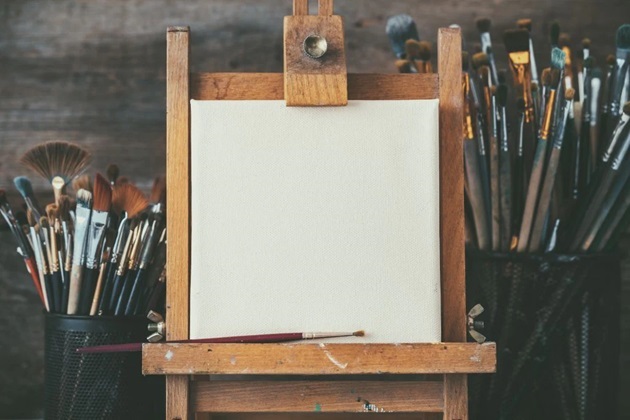Discover 4 Tips for Choosing the Right Art Canvas for Your Paintings
Art canvases are one of the most popular surfaces for painting. Whether you are stretching your canvas or buying ready-prepared stretched canvases or canvas boards, there are many types of fabrics to choose from. Fortunately, there are several tips for making the best selection possible.
Choosing the Best Canvas for Painting

You can have the freedom to display your creative spark on a well-crafted and user-friendly canvas for painting. The type of paint canvas you pick will influence the outcome of your artwork. Many artists experiment with different paint canvases, primers, and grounds before deciding on the one that best fits their style.
The surface features of some artists’ paintings can be significantly influenced by techniques such as staining in oils or acrylics. On the other hand, the weight of the cloth, the material it is composed of, and the surface preparation, in various combinations, will all provide a unique painting experience and influence the final appearance of your painting.
Material Selection
Cotton and linen or flax are the two main fibres used to make stretched-coloured canvas for painting. A canvas for paint can also be made using specialty fibres such as hemp and jute. Although jute is a different fibre, it is commonly referred to as extra-rough linen due to its proximity to it.
Cotton stretches well and retains its shape on stretcher bars. Some primed Italian cotton is coated on the reverse, making it darker on the back. Unprimed cotton, on the other hand, is often a cream colour. Unlike conventional cotton canvases, cotton duck ones contain tighter threads.
Cotton duck is probably one of the most popular stretched canvases in the world. It is relatively thick, has a distinctive weave, and has many applications other than art. There are three weight options. It is also the most common canvas available by the metre and roll due to its low price.
A “medium” texture Italian cotton is finer than all other cotton types, with a tighter weave, finer thread, and a smoother surface. Artists utilise Italian poly-cotton as their canvas. There is also no grain, which is a very fine texture. This cotton fabric, however, does not relax as much as 100% cotton and will eventually become loose due to the polyester blend.
Linen is the more expensive alternative for stretched canvas because it requires many more steps to treat the flax fibres and its inelasticity makes it difficult to weave into fabric. The French linen canvas is stronger than the Italian one and made of smoother, more tightly spun yarn. It also has a more consistent, tight weave. In contrast, Belgian linen falls somewhere in the middle.
The famed French linen is good because it uses the best flax available and has strict quality control. It is a wonderful choice for different painting mediums, scraping, repainting, scratching back, repainting, and impasto, while stretching can be problematic because of its tight weave.
Weave Type
Along with the fibre type, you must consider the weight and weave texture. Stretched canvas for painting is weighed in grams per square metre (gsm) or ounces per square yard (oz), similar to paper. A rough canvas has a distinct weave, whereas a fine canvas has little roughness and can be nearly smooth.
The texture of the canvas, which might be no grain, extra-fine, fine, medium, rough, or extra-rough, influences the feel of the painting as well as its ultimate appearance. All of these phrases refer to the weave’s texture rather than its weight. Texture does not always determine weight. A heavier canvas with an extra-fine texture is a possibility, as is a lighter canvas with a rough or medium texture.
Weight
Weight, which indicates the amount of fabric per square inch, is influenced by the tightness of the weave and the thickness of the thread used in the weaving. For especially big, stretched canvases, a heavier fabric may be preferable since the greater the weight, the more tension the canvas fabric can endure without tearing.
A coarse or rough canvas may be lighter in weight than a fine canvas that is neatly woven, particularly if it is loosely woven. A heavy canvas is usually manufactured with a thick thread, while a light canvas has a thin thread.
Priming
Last but not least, the primer on your canvas also matters. Build a sturdy base before applying paint to ensure that the painting lasts as long as possible and remains in good condition. Canvas can be left untreated or painted with primer. However, not all coatings are compatible with all types of canvas. For less expensive student-grade canvases, one coat of primer is sufficient; for the majority of artist-grade canvases, two to four coats are needed.
Acrylics can be painted directly on an unprimed canvas, but if you intend to use oils and want the painting to last, you must first seal the canvas. Oil paint oxidises and dries by slowly absorbing oxygen from the air. When oil from oil paint or oil primer comes into contact with canvas or paper, the fibres gradually deteriorate. This canvas needs to be sealed to prevent oil from seeping.